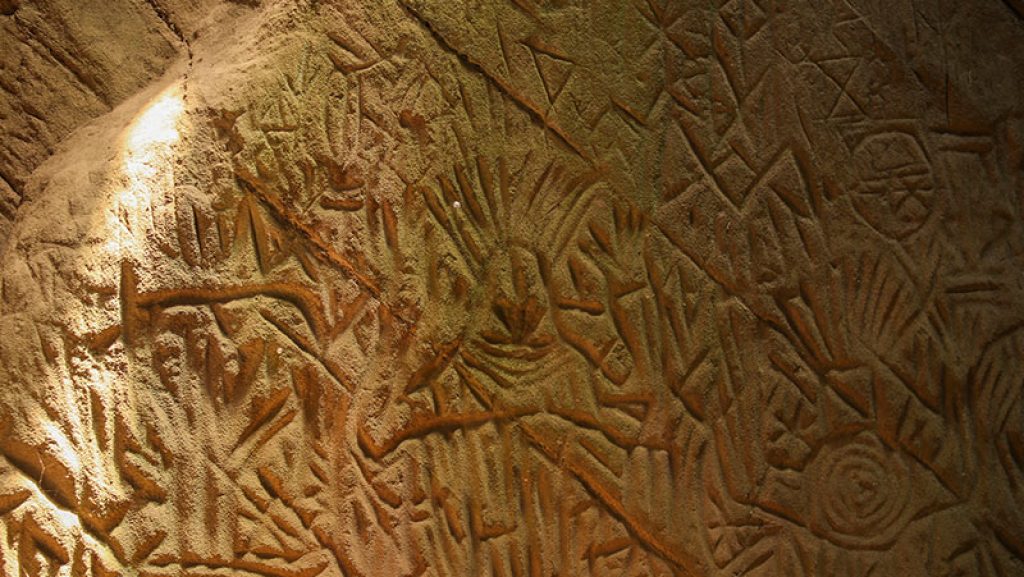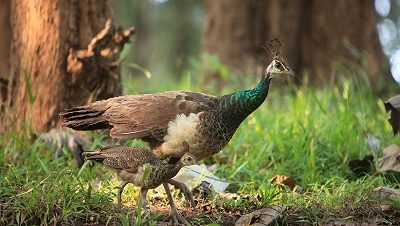Places to visit in Wayanad district
Places to visit in Wayanad district
Edakkal Caves
 Located at about 1200 ft above the sea level, the Edakkal Caves are among the oldest human settlements ever discovered. Inside the caves are pictorial drawings and engravings that indicate the presence of ancient human settlements in the region.
Located at about 1200 ft above the sea level, the Edakkal Caves are among the oldest human settlements ever discovered. Inside the caves are pictorial drawings and engravings that indicate the presence of ancient human settlements in the region.
Despite their name, the Edakkal Caves are not actually caves. They are part of a pre historic rock shelter, formed naturally when one huge boulder got wedged between two bigger ones. The name Edakkal itself means “a stone in between”.
The Edakkal cave paintings are remarkable in their sheer scale and complexity, but their origins are shrouded in mystery. Ever since their discovery in 1895, they have been a source of awe and wonder for tourists and historians alike.
The engravings are abundant and of great variety. Human figures, animals, tools, vehicles, day-to-day occurrences and scripts in different language scripts have been discovered here. The diversity of the engravings suggest that the Edakkal caves were inhabited several times at different points in history. The oldest among them date back to 6000 B.C, to the age of Stone Age man.
The engravings are not the only attractions at Edakkal. The Muniyaras, or ancient burial sites that have been discovered in these hills have yielded a rich collection of ancient earthenware and pottery. Most of the artifacts discovered here are now housed in the Wayanad Heritage Museum.
Banasura Sagar Dam
Wayanad is home to India’s largest earthen dam, the Banasura Sagar. The dam, which was constructed in 1979, is built across the Karamanathodu tributary of the Kabani River. It is named after the Asura king Banasura, son of Mahabali, who is said to have observed a severe penance in the surrounding hills. The dam is made entirely of massive stacks of rocks and stones, and has become a popular tourist spot, known for its spectacular views and boating trips.
Tholpetty WildLife Sanctuary
 Lying towards the north of the district of Wayanad, this region harbours a rich diversity of flora. Open to wildlife jeep safari twice a day, you are bound to spot various animals and bird species in their natural habitat during the 1.5-2 hour journey. A lake where animals come down for a drink is a major attraction here.
Lying towards the north of the district of Wayanad, this region harbours a rich diversity of flora. Open to wildlife jeep safari twice a day, you are bound to spot various animals and bird species in their natural habitat during the 1.5-2 hour journey. A lake where animals come down for a drink is a major attraction here.
The forests constitute various forest types like the tropical moist dry deciduous, patches of semi evergreen forests and trees and plants like the bamboo and long spiky bushes of ginger. Plantations of teak, eucalyptus, silver oak and rosewood cover about one third of the sanctuary.
Frequent sightings of elephant herds, deers, big cats, panthers, tigers, langurs, bonnet macaques, bison, sambar deer, malabar squirrels, bears and the rare Slender Loris have all been reported in these forests.
Chembra Peak

The hills, rocks and valleys which contribute to the very unique character of Wayanad provide a lot for adventure tourism. Trekking to the Chembra peak is a risky mountaineering endeavour. Chembra peak, the highest hill in Wayanad, is near Meppady town. Trekking to the top of this peak takes almost a day. Tourists can also stay one or two days at the top of the peak in temporary camps. District Tourism Promotion Council provides guides, sleeping bags, canvases, huts and trekking implements on hire. The scenic beauty of Wayanad, which is visible from the top of Chambra, is very exhilerating.
Phantom Rock

The towering Phantom Rock and its surroundings are popular among nature lovers and photographers. The rock formation, which resembles a skull, is a unique example of nature’s artistry. It is a great place to relax and reflect on the beauty of the surrounding landscape.
Source : Wayanad
Last Modified : 7/9/2024
This page covers the places can be visited in Kera...
